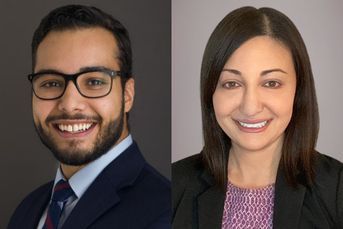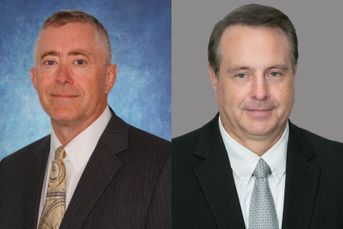Using trusts to fill the void of stretch IRAs and 401(k)s

The SECURE Act's 10-year window will cause many beneficiaries to spend rather than save, panelists said in an InvestmentNews webcast
One side effect of the SECURE Act is that more retirement account beneficiaries will spend down their inheritances quickly, rather than allowing the assets to grow and compound.
That’s the assessment of a panel of lawyers and advisers speaking Tuesday on the InvestmentNews webcast “Tax planning 2020: How does the new legislation affect your clients?”
Financial advisers will have a multitude of opportunities to help clients and beneficiaries plan in light of the SECURE Act, particularly those with moderate or large balances.
“Something that the SECURE Act is making all of us think about is that rules of thumb are not going to work anymore when you are giving personalized advice to your clients,” said Emily Harper, a private wealth adviser at Monument Wealth Management. “It’s not enough to say, ‘In retirement, spend down of your taxable accounts first, then your IRAs, then your Roth IRAs.’”
That means having cash flow and net worth statements and using those to help clients plan.
“Without that, how can we really be providing them with the proper advice?” said Marc Freedman, president and CEO of Freedman Financial.
“Ask yourself: Are you able to produce a comprehensive net worth statement for clients within a moment’s notice?” Mr. Freedman said. “You should be able to do that. And if you’re not, ask yourself, ‘Why am I not doing that?’”
Part of being able to properly plan for clients in this new environment means having a team of specialists, including an adviser, a lawyer, an accountant and potentially an insurance consultant, said Marty Shenkman, an estate and tax-planning lawyer in private practice.
“Even if you did most of the planning yourself before, you really need a collaborative team to do it well, given the [new] complexity,” Mr. Shenkman said.
The stretch is gone
From a planning perspective, the most consequential aspect of the new law is the elimination of stretch provisions for individual retirement and defined-contribution accounts.
“People who accumulated large balances inside of IRAs are having to adjust their planning to leave the same amount of wealth potential for the next generation,” Ms. Harper said. “Their intention was to create this long-term wealth for their families that is now going away, and we have to figure out how to compensate that.”
Unless a beneficiary is an exempt category – such as a spouse or a relative within 10 years of age of the account owner – they must fully deplete the inherited account within 10 years of the original owner’s death.
For many IRA owners, that might not mean much, panelists said. For example, someone with $500,000 in an IRA who wants to spread those assets among several children would not be heavily affected, as each beneficiary would have a decade to withdraw $125,000, said Bob Keebler, partner at Keebler & Associates.
But things are now more complicated for people with larger balances, Mr. Keebler said.
“We’re starting over,” he said. “That’s what we found out, really quickly, when we started running the math.”
Different approaches
There are seven different ways to help clients address issued caused by the lack of stretch provisions, Mr. Keebler said. Those include strategies for naming beneficiaries, based on life expectancy and modified life-expectancy distributions; making Roth conversions; using life insurance to help manage wealth; using a multigenerational IRA trust; opting for a grantor trust; using out-of-state trusts; and going with a charitable remainder trust, or CRT, he said.
“If you go long enough with the CRT, you will be able to turn what should be ordinary income from an IRA into eventually long-term capital gain, depending on how you invest,” he said. “Understanding the taxation of these CRTs is going to be really important because if you understand that, you will be able to get your client a great result.”
Different trusts for different clients
Using one trust strategy or a combination can help clients pass their assets to beneficiaries in the most tax-efficient way, the panelists said.
A multigenerational IRA trust can “sprinkle” income among different beneficiaries, such as children and grandchildren, Mr. Keebler said. A “678 grantor trust,” named for that section of the tax code, can allow the taxes on the assets to be set according to the beneficiary’s bracket, which can be much lower than the account owner’s, he noted. And while complicated, using an out-of-state trust allows clients to avoid some state taxes, he said.
“If you can save state income tax and get it taxed at a lower bracket … you can really goose up the net-of-tax return for your client, which should make them love you,” Mr. Shenkman said.
For clients with larger IRA balances, about $2 million and higher, substantial advanced planning will be necessary, Mr. Keebler said. People with more than $500,000 fall into an intermediate category, where some planning will be very helpful, he said.
That is because beneficiaries could be more tempted to spend the inherited balances than they have been in the past, due to the 10-year window.
“If the money has to come out, a lot of people are just going to spend it,” Mr. Shenkman said. “There’s a midrange of people that maybe we can do something to help, perhaps by putting the money in an accumulation trust, to keep it growing and save some taxes.”
A replay of the entire Feb. 18 “Tax planning 2020: How does the new legislation affect your clients?” webcast is now online.
Learn more about reprints and licensing for this article.








